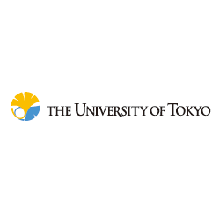ADOPTION OF CREDIT REFERENCE BUREAUS’ REPORTS ON THE PERFORMANCE OF SACCOS IN KENYA: A CASE STUDY OF STIMA SACCO
Njoroge Sarah Wairimu - MBA, Jomo Kenyatta University of Agriculture and Technology, Kenya
Dr. Gladys Rotich - Lecturer, Jomo Kenyatta University of Agriculture and Technology, Kenya
ABSTRACT
Due to the increased changes in the business world in terms of global competition, technology and generally business trends, for an organization to survive the need to assess factors affecting organization performance cannot be overlooked. The same applies to management of financial institutions like Sacco’s portfolio. Good credit management provide Sacco’s’ with a reasonable and adequate return on loans and capital employed primarily through improvement in operations efficiency this generates adequate internal resources to finance the institution’s growth. This study was conducted through a survey of Stima Sacco The main objective of the study was to assess the effect of Credit Reference Bureau on performance of Saccos in Kenya. The study used primary data obtained through the questionnaires provided to employees and management of Stima Sacco. Chapter one gave the background information about Credit Reference Bureaus, problem statement, objectives of the study, research questions to guide the researchers and justification of the research. Chapter two entailed study done in the past on Credit Reference Bureaus including its effects on various factors like on non-performing loans, cost of lending, appraisal methods and credit accessibility. It also included conceptual framework which indicates the variables relationship. It highlights the theories guiding the study which include the moral hazard theory, credit rationing theory, credit rationing theory and adverse selection theory. Chapter three gave a preamble to the research design and methodology to be adopted, the research design, the target population was all the 124 employees at Stima Sacco. Data was collected using questionnaire method and analyzed using descriptive statistics. The study established that CRB ensures objectivity in loan write-offs to a very great extent. The study established that CRB affects the interest rate charged and the insurance costs related to lending by SACCOS. The study concludes that CRB reduces over reliance on collateral for loan appraisal and emphasizes cash flow and liquidity as a method of appraisal to a very great extent. The study concludes that CRB increases efficiency ratios, Use of CRB results to better liquidity position, CRBS increases the number of repeat customers hence increasing profitability and that CRB enhances repayment of loans written off loans. Therefore, this study recommends that Stima SACCO minimizes its involvement in non-performing loans. This can be achieved by carry out thorough background studies on loan applicants to ascertain that they will put good use of the funds. Collateral is what has been keeping very many people out of loan applications in SACCOs. Therefore, through CRB, the reliance on collateral is reduced and therefore loan uptake will increase. The study recommends that SACCOs liaise with CRB to ensure that the collateral in SACCOS becomes a thing of the past.









